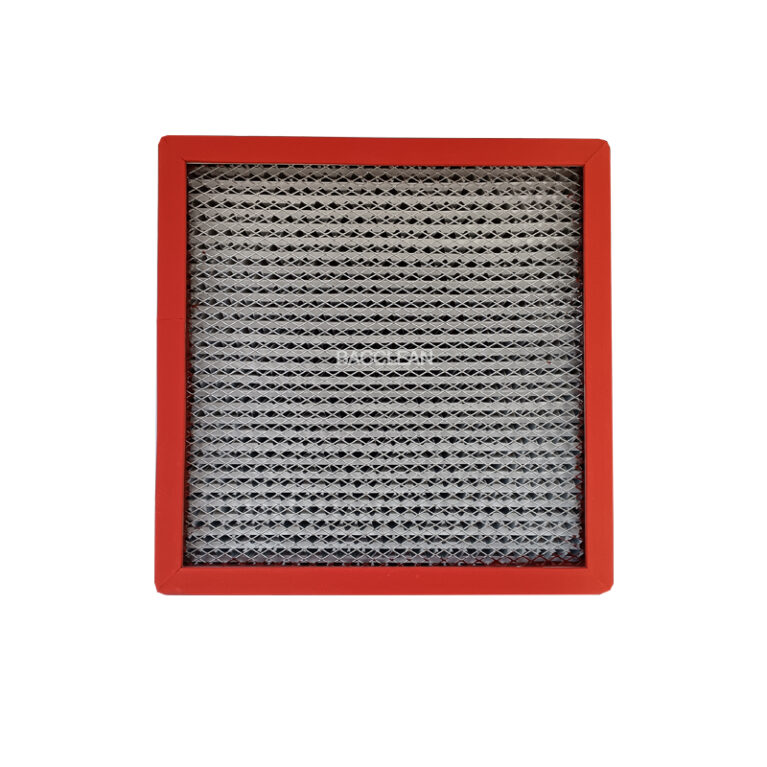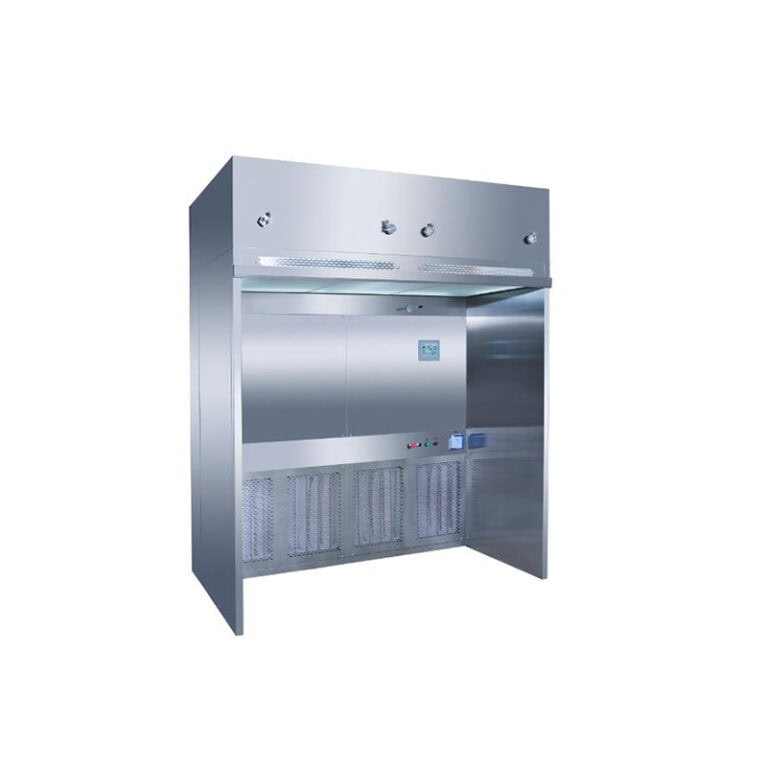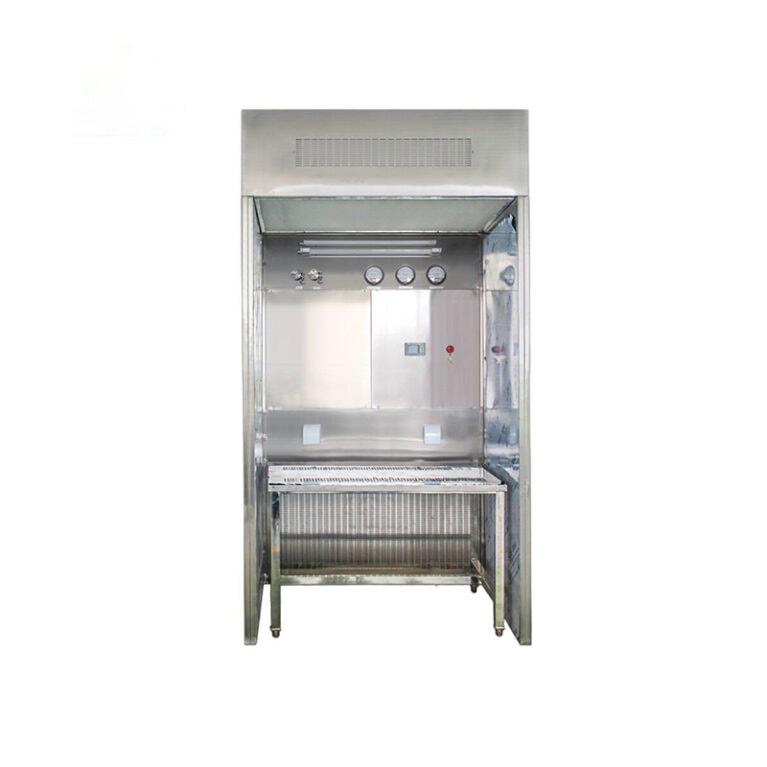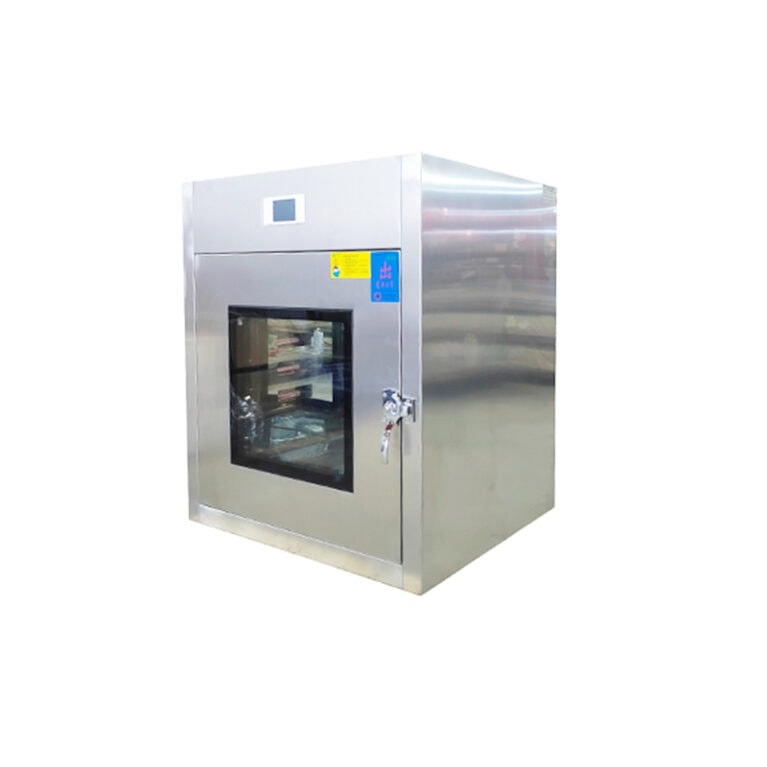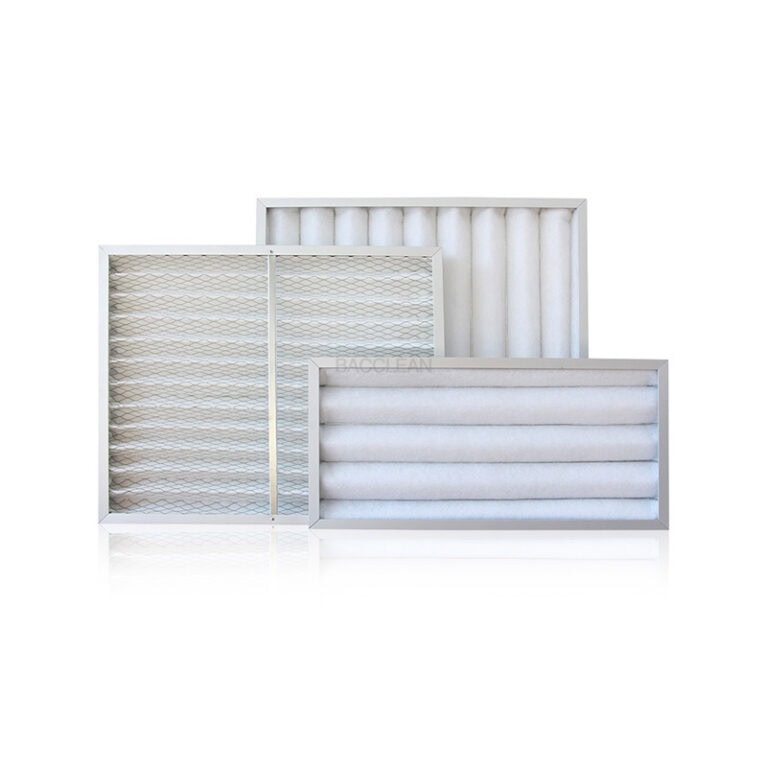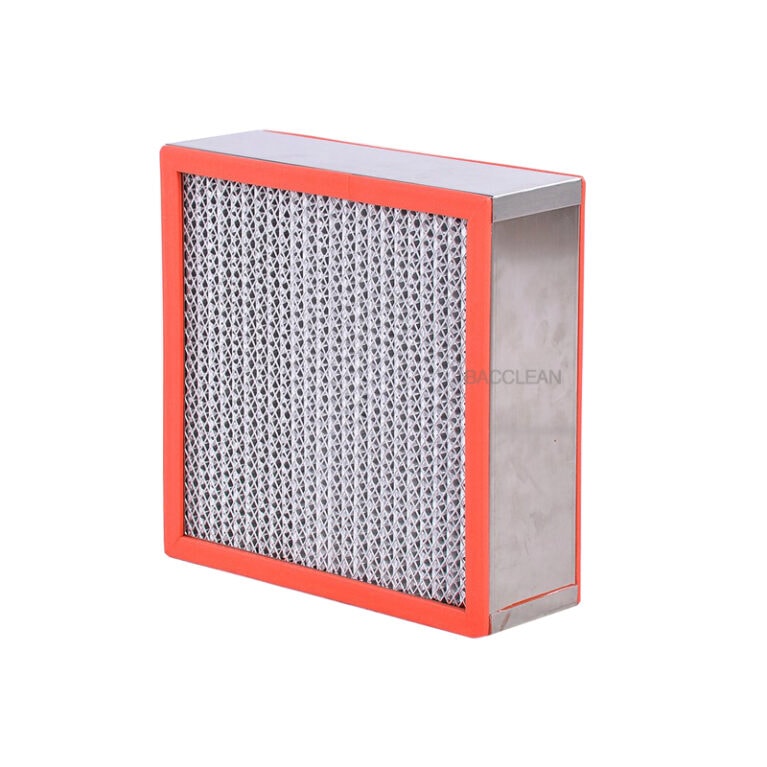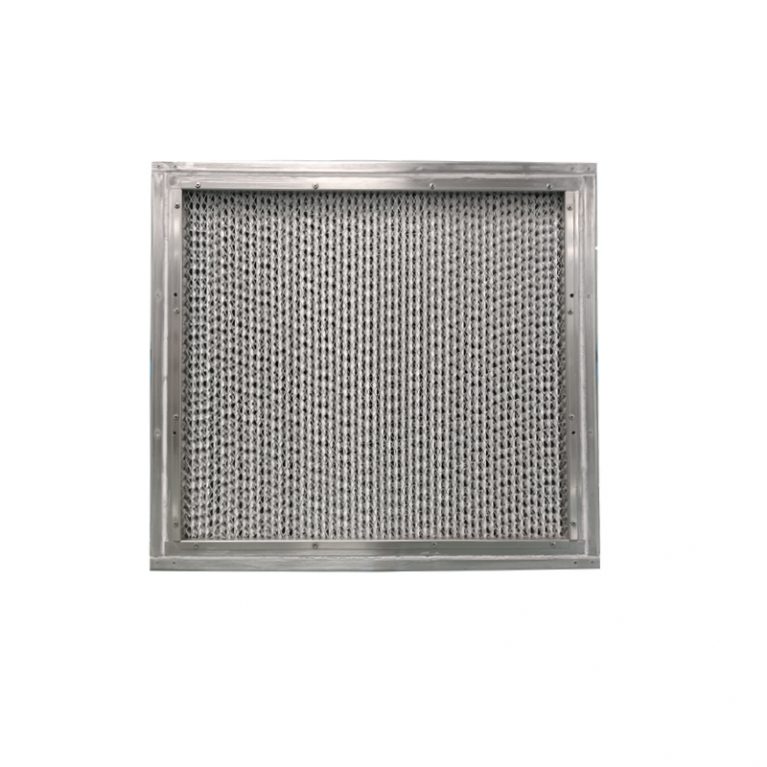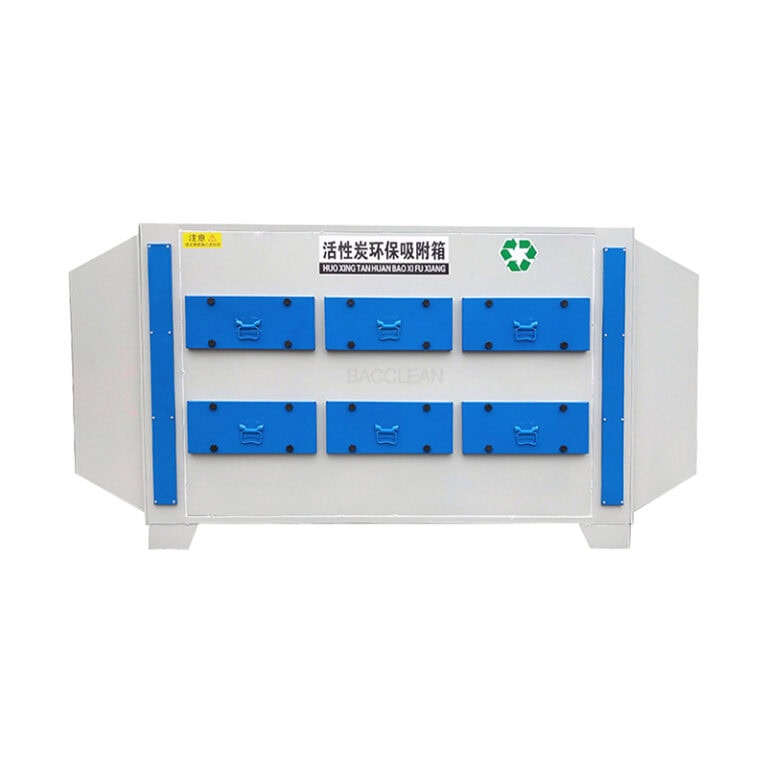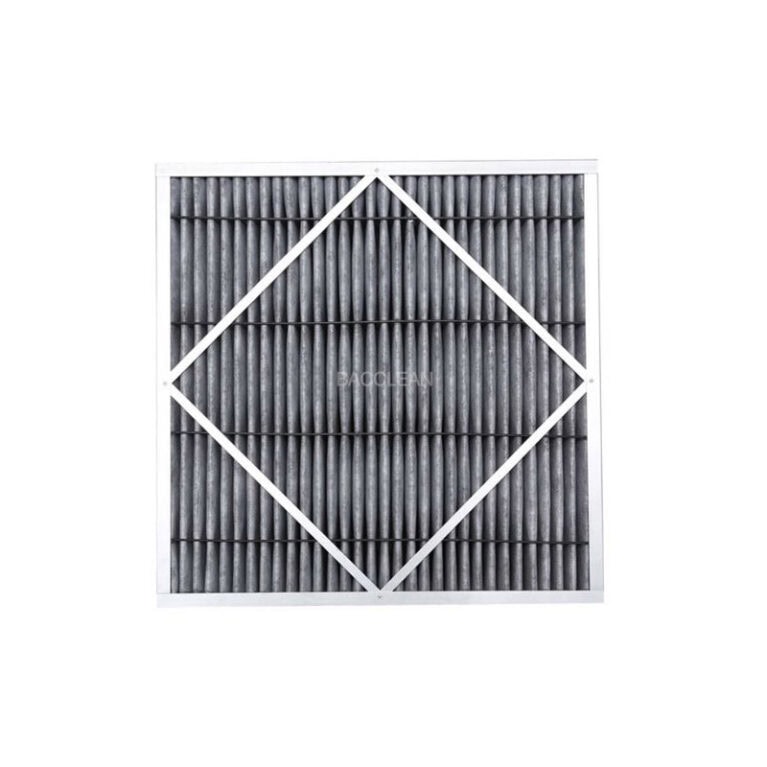تأخذ مرشحات الهواء ذات أكياس الألياف الزجاجية (المعروفة أيضًا باسم مرشحات أكياس الألياف الزجاجية) مادة مرشح الألياف الزجاجية كجوهر وتتميز بمقاومة درجات الحرارة العالية، ومقاومة التآكل الكيميائي، ودقة الترشيح العالية (مستويات الكفاءة المتوسطة والعالية بشكل أساسي)، وقدرة كبيرة على الاحتفاظ بالغبار. وهي تُستخدم بشكل أساسي في سيناريوهات "الترشيح متوسط الكفاءة" أو "الحماية المسبقة للترشيح عالي الكفاءة" في سيناريوهات تنقية الهواء. وهي مناسبة بشكل خاص للبيئات ذات درجات الحرارة العالية أو الغازات المسببة للتآكل أو متطلبات النظافة العالية. يمكن تصنيف مجالات التطبيق الأساسية إلى ثلاثة أبعاد رئيسية: "الإنتاج الصناعي"، و"التصنيع الخاص"، و"العام والمدني"، على النحو التالي:
I. مجال الإنتاج الصناعي: تحمل البيئات القاسية وضمان التوافق مع المعدات والانبعاثات
في السيناريوهات الصناعية، تكمن القيمة الأساسية لمرشحات الأكياس المصنوعة من الألياف الزجاجية في تحقيق الترشيح الفعال وحماية المعدات في البيئات ذات درجات الحرارة العالية أو التآكل أو البيئات عالية الغبار، مما يمنع الغبار من التأثير على الإنتاج أو تجاوز معايير الانبعاثات. وتشمل التطبيقات النموذجية ما يلي:
صناعة الطاقة والطاقة (ترشيح غاز المداخن عالي الحرارة)
محطات الطاقة الحرارية/محطات حرق النفايات: ترشيح غاز المداخن في نهاية ذيل الغلايات وبعد نظام إزالة الاحتراق (SCR). يمكن أن تتحمل الألياف الزجاجية درجات حرارة تصل إلى 250-300 درجة مئوية (مع بعض الطرز الخاصة التي تتمتع بدرجات حرارة أعلى)، والتي يمكن أن تعترض الرماد المتطاير وجزيئات الكربون غير المحترقة في غاز المداخن، مما يمنع الغبار من انسداد معدات إزالة الكبريت اللاحقة (مثل أبراج إزالة الكبريت الرطب) أو تلويث انبعاثات المداخن. وفي الوقت نفسه، يتجنب التصاق الغبار بسطح المبادلات الحرارية والتأثير على كفاءة التبادل الحراري.
محطة توليد الطاقة من الكتلة الحيوية: ترشيح غاز المداخن الناتج عن حرق وقود الكتلة الحيوية مثل القش ونشارة الخشب. يحتوي غاز المداخن على كمية كبيرة من غبار رماد الخشب وكمية صغيرة من الغازات المسببة للتآكل (مثل الكبريتيدات). يمكن أن تقلل مقاومة التآكل في مادة المرشح المصنوعة من الألياف الزجاجية من تآكل أكياس المرشح وتضمن أن انبعاث الغبار يفي بمعايير حماية البيئة (مثل GB 13223-2011 "معيار انبعاث ملوثات الهواء لمحطات الطاقة الحرارية").
الصناعات الكيميائية والبتروكيماوية (ترشيح الغازات/الغبار المسببة للتآكل)
تهوية أوعية التفاعل الكيميائي: تنقية العادم أو ترشيح الهواء النقي في ورش التفاعل الحمضي القاعدي وورش تخليق المذيبات. يمكن أن يعترض الغبار الكيميائي المتولد أثناء عملية التفاعل (مثل جزيئات الملح ومسحوق المحفز)، وفي نفس الوقت يتحمل كمية صغيرة من الغازات الحمضية (مثل رذاذ حمض الهيدروكلوريك أو رذاذ حمض الكبريتيك) أو الغازات القلوية (مثل الأمونيا)، مما يجنب تآكل قنوات التهوية أو تلوث البيئة الخارجية.
تكرير البترول/صناعة الكيماويات الفحمية: ترشيح غاز ذيل العملية في وحدات التكسير الحفزي وورش تحويل الفحم إلى أوليفينات. يحتوي غاز العادم على غبار النفط والغاز، وجزيئات فحم الكوك والبيئة ذات درجة الحرارة العالية (150-200 درجة مئوية). يمكن لمرشح كيس الألياف الزجاجية التقاط الغبار بكفاءة، مما يمنعه من دخول الضاغط اللاحق ومعدات الفصل، وبالتالي تجنب تآكل المعدات أو انخفاض نقاء المنتج.
صناعة التعدين ومعالجة المعادن (ترشيح الغبار في درجات الحرارة العالية)
مصنع الصلب: تنقية غاز الفرن العالي، وترشيح غاز المداخن من صناعة الصلب المحول. يحتوي غاز المداخن عالي الحرارة (200-250 درجة مئوية) على كمية كبيرة من غبار أكسيد الحديد (مثل أكسيد الحديد وأكسيد المنجنيز). يمكن لمواد الترشيح المصنوعة من الألياف الزجاجية تحمل درجات الحرارة العالية واعتراض الغبار بكفاءة. ويمكن إعادة استخدام الغبار المستعاد (مثل إعادته إلى الفرن العالي لصناعة الحديد)، مع تقليل تآكل الغبار على المراوح والصمامات.
صهر المعادن غير الحديدية (النحاس والألومنيوم والزنك) : ترشيح غاز المداخن من أفران الصهر. في غازات المداخن التي تحتوي على غبار المعادن الثقيلة (مثل مسحوق النحاس ومسحوق الزنك) والبيئات ذات درجات الحرارة العالية، يمكن لمرشحات أكياس الألياف الزجاجية أن تحقق تجميعًا فعالاً للغبار (بكفاءة ترشيح تزيد عن 99%)، مما يمنع تلوث التربة ومصادر المياه بالمعادن الثقيلة، ويلبي متطلبات حماية البيئة.
II. مجالات التصنيع الخاصة: نظافة عالية + توافق بيئي لضمان جودة المنتج
هذه السيناريوهات لها متطلبات عالية لنظافة الهواء وقد تكون مصحوبة بظروف بيئية محددة (مثل ارتفاع درجة الحرارة والجفاف). يمكن أن تعمل مرشحات الأكياس المصنوعة من الألياف الزجاجية كـ "نواة للمرشحات متوسطة وعالية الكفاءة" أو "الحماية المسبقة للمرشحات عالية الكفاءة (HEPA/ULPA)". وتشمل التطبيقات النموذجية ما يلي:
صناعة الإلكترونيات وأشباه الموصلات
ورشة تصنيع الرقائق: نظام تهوية الغرفة النظيفة لعمليات الطباعة الليثوغرافية الضوئية والحفر. وباعتباره مرشحًا مسبقًا لـ HEPA/ULPA، فإنه يعترض الغبار (0.5-5 ميكرومتر) وشوائب الألياف في الهواء، ويقلل من الحمل على المرشحات عالية الكفاءة، ويطيل دورة استبدالها (HEPA مكلف نسبيًا). وفي الوقت نفسه، يمكن أن يمنع انبعاث الغبار المنخفض لمادة مرشح الألياف الزجاجية من سقوط الألياف الخاصة بها وتلويث الرقاقة، مما يضمن دقة الطباعة الليثوغرافية الضوئية (كلما كان عرض خط الرقاقة أصغر، كلما كان أكثر حساسية للغبار).
تغليف المكونات الإلكترونية: ترشيح الهواء في ورش تغليف الدايودات المضيئة والدوائر المتكاملة (IC). اعتراض غبار اللحام وجزيئات الراتنج لمنعها من الالتصاق بدبابيس المكونات أو سطح العبوة، وتجنب حدوث دوائر قصيرة أو سوء التغليف (مثل الفقاعات ونقاط الشوائب).
الصناعات الدوائية والغذائية (ترشيح الامتثال)
مصنع الأدوية (المنطقة المعقمة/النظيفة) : أنظمة تهوية لورش إنتاج المضادات الحيوية واللقاحات. باعتبارها وحدة ترشيح متوسطة الكفاءة، فإنها تعترض الغبار وناقلات الميكروبات (مثل البكتيريا الملتصقة بجزيئات الغبار) في الهواء النقي الخارجي أو الهواء الدائر داخل الورشة، مما يوفر الحماية للترشيح اللاحق عالي الكفاءة (كما هو الحال في خزانات السلامة الحيوية وخطوط التعبئة المعقمة). الامتثال لمتطلبات GMP (ممارسات التصنيع الجيدة للمنتجات الصيدلانية) لـ "الجسيمات المحمولة جواً في المناطق النظيفة" (على سبيل المثال، يجب التحكم في عدد الجسيمات ≥5 ميكرومتر في المناطق النظيفة من المستوى D).
معالجة الأغذية في درجات الحرارة العالية: تنقية هواء العادم في ورش خبز البسكويت وتجفيف الحليب المجفف بالرذاذ المسحوق. أثناء عملية الخبز/التجفيف، يتولد غبار بدرجة حرارة عالية (120-180 درجة مئوية) (مثل جزيئات الدقيق وجزيئات الحليب المجفف). يمكن لمادة الفلتر المصنوعة من الألياف الزجاجية أن تتحمل درجات الحرارة العالية وتلتقط الغبار، مما يمنع تصريفه في الهواء الطلق والتسبب في تلوث الهواء. وفي الوقت نفسه، يمكنها منع دخول الغبار إلى نظام تكييف الهواء في الورشة والتسبب في التلوث المتبادل.
صناعة الطيران والتصنيع الدقيق
تهوية نظيفة في ورش تصنيع شفرات التوربينات والمحامل الدقيقة لمعالجة أجزاء المحركات الهوائية. اعتراض غبار قطع المعادن (مثل سبائك التيتانيوم وحطام السبائك عالية الحرارة)، ومنع الغبار من الالتصاق بسطح المكونات والتأثير على دقة المعالجة (مثل نعومة الشفرة)، وفي الوقت نفسه، يمكن أن تتكيف مقاومة الزيت لمادة مرشح الألياف الزجاجية مع كمية صغيرة من رذاذ زيت القطع في الورشة، مما يقلل من انسداد أكياس المرشح.
تصنيع الأدوات البصرية: ورشة إنتاج العدسات وأجهزة الليزر. تصفية جسيمات الغبار الصغيرة (0.3-1 ميكرومتر) في الهواء لمنعها من الالتصاق بسطح العدسات البصرية، مما قد يؤدي إلى انخفاض نفاذية الضوء أو انحراف التصوير، وضمان أداء الأدوات (مثل التلسكوبات وعدسات طابعات الليزر).
ثالثاً القطاعان العام والمدني: التكيف مع المتطلبات البيئية المحددة وتعزيز موثوقية التنقية
وعلى الرغم من أن مثل هذه السيناريوهات لا تنطوي على درجات حرارة عالية للغاية أو تآكل، إلا أنها تتطلب متطلبات عالية لدقة الترشيح وثبات مادة المرشح. وغالبًا ما تُستخدم المرشحات الكيسية المصنوعة من الألياف الزجاجية باعتبارها "جوهر التنقية المتوسطة والعالية الكفاءة"، وتشمل التطبيقات النموذجية ما يلي:
التهوية في المرافق الطبية (المناطق عالية الخطورة)
في غرف العمليات بالمستشفيات ووحدة العناية المركزة (وحدة العناية المركزة)، تعمل كوحدة ترشيح متوسطة الكفاءة لتكييف الهواء المركزي أو وحدات تنقية الهواء، حيث تعترض الغبار وحبوب اللقاح وبقايا القطرات في الهواء النقي (بعد الاعتراض الأولي)، مما يقلل الحمل على الترشيح اللاحق عالي الكفاءة (مثل HEPA)، ويضمن نظافة البيئة الجراحية/العلاجية (على سبيل المثال، تتطلب غرف العمليات مستوى نظافة يبلغ 10000 أو 100)، ويقلل من خطر انتقال العدوى.
المختبر البيولوجي: تنقية هواء العادم لمختبرات الاستنبات الميكروبي ومختبرات أبحاث الفيروسات. يمكن منع الهباء الحيوي (مثل جزيئات الغبار المرتبطة بالبكتيريا والفيروسات) المتولدة أثناء تجربة الاعتراض. يمكن أن تمنع الخاصية المضادة للتطهير لمادة المرشح المصنوعة من الألياف الزجاجية (التي يمكنها تحمل تطهير الفورمالديهايد وبيروكسيد الهيدروجين) نمو الكائنات الحية الدقيقة في أكياس المرشح وتوقف انبعاث الجسيمات البيولوجية الضارة في الهواء الطلق.
المساحات العامة الكبيرة ومراكز البيانات
الترشيح متوسط الكفاءة لنظام الهواء النقي لتكييف الهواء المركزي في محطات المطارات/محطات محطات السكك الحديدية (حركة الأقدام العالية والغبار العالي). بالمقارنة مع مواد الترشيح العادية المصنوعة من ألياف البوليستر، فإن مواد الترشيح المصنوعة من الألياف الزجاجية تتمتع بقدرة أكبر على الاحتفاظ بالغبار، مما يقلل من تكرار الاستبدال (مناسبة للسيناريوهات ذات حركة الأقدام الكبيرة والاستبدال غير الملائم)، مع ضمان نضارة الهواء الداخلي. ويمكنها اعتراض الرمال، وقشور الحور، وحبوب اللقاح وغيرها من المواد في الهواء الخارجي النقي.
مركز البيانات/غرفة الخادم: ترشيح متوسط الكفاءة لأنظمة تكييف الهواء والتهوية. اعتراض الغبار والألياف في الهواء لمنع الغبار من الالتصاق بالمكونات الدقيقة مثل اللوحات الأم للخادم والأقراص الصلبة، مما قد يتسبب في حدوث قصر في الدوائر الكهربائية أو أعطال في تبديد الحرارة. يمكن أن تمنع مقاومة درجات الحرارة العالية لمواد الترشيح المصنوعة من الألياف الزجاجية (التي يمكن أن تتكيف مع بيئة تتراوح درجة حرارتها بين 30-40 درجة مئوية في غرفة الكمبيوتر خلال فصل الصيف) أكياس المرشح من التشوه بسبب درجات الحرارة العالية وتحافظ على كفاءة الترشيح المستقرة.
ملخص: منطق التطبيق الأساسي لمرشحات أكياس الألياف الزجاجية
يتمثل جوهر تطبيق مرشحات أكياس الألياف الزجاجية في "توفير ترشيح موثوق به متوسط وعالي الكفاءة في بيئات محددة (درجات حرارة عالية، تآكل) أو سيناريوهات ذات متطلبات نظافة عالية". تنعكس قيمته الأساسية في ثلاث نقاط:
التحمل البيئي: مقاوم لدرجات الحرارة العالية من 200-300 درجة مئوية والتآكل الحمضي والقلوي، ومناسب للبيئات الصناعية القاسية، ويحل مشاكل التشوه السهل والتآكل السهل لمواد المرشح الشائعة (مثل ألياف البوليستر).
أداء الترشيح: مستوى كفاءة متوسط إلى عالي الكفاءة (مثل F7-F9، H10)، قادر على اعتراض الغبار الذي يتراوح من 0.3 إلى 5 ميكرومتر بفعالية. وهو لا يلبي متطلبات الامتثال للانبعاثات الصناعية فحسب، بل يوفر أيضًا حماية مسبقة لسيناريوهات النظافة العالية (الإلكترونيات والمستحضرات الصيدلانية).
اقتصادية: يتميز بقدرة كبيرة على الاحتفاظ بالغبار، ودورة استبدال أطول من المرشحات العادية متوسطة الكفاءة، وتكاليف تشغيل أقل على المدى الطويل. وهي مناسبة بشكل خاص للسيناريوهات الصناعية ذات الغبار العالي والأحمال العالية.
عند القيام بالاختيار، من الضروري مطابقة مرشح كيس الألياف الزجاجية مع درجة مقاومة درجة الحرارة المقابلة وسمك مادة المرشح بناءً على نطاق درجة حرارة المشهد (مثل ما إذا كان يتجاوز 200 ℃)، ونوع الغاز المسبب للتآكل (مثل الحمضي/القلوي)، ومتطلبات دقة الترشيح (مثل F8 أو H10). في الوقت نفسه، انتبه إلى التوافق مع المرشحات عالية الكفاءة في المصب (لتجنب الإفراط في الترشيح أو الحمل غير الكافي).
I. مجال الإنتاج الصناعي: تحمل البيئات القاسية وضمان التوافق مع المعدات والانبعاثات
في السيناريوهات الصناعية، تكمن القيمة الأساسية لمرشحات الأكياس المصنوعة من الألياف الزجاجية في تحقيق الترشيح الفعال وحماية المعدات في البيئات ذات درجات الحرارة العالية أو التآكل أو البيئات عالية الغبار، مما يمنع الغبار من التأثير على الإنتاج أو تجاوز معايير الانبعاثات. وتشمل التطبيقات النموذجية ما يلي:
صناعة الطاقة والطاقة (ترشيح غاز المداخن عالي الحرارة)
محطات الطاقة الحرارية/محطات حرق النفايات: ترشيح غاز المداخن في نهاية ذيل الغلايات وبعد نظام إزالة الاحتراق (SCR). يمكن أن تتحمل الألياف الزجاجية درجات حرارة تصل إلى 250-300 درجة مئوية (مع بعض الطرز الخاصة التي تتمتع بدرجات حرارة أعلى)، والتي يمكن أن تعترض الرماد المتطاير وجزيئات الكربون غير المحترقة في غاز المداخن، مما يمنع الغبار من انسداد معدات إزالة الكبريت اللاحقة (مثل أبراج إزالة الكبريت الرطب) أو تلويث انبعاثات المداخن. وفي الوقت نفسه، يتجنب التصاق الغبار بسطح المبادلات الحرارية والتأثير على كفاءة التبادل الحراري.
محطة توليد الطاقة من الكتلة الحيوية: ترشيح غاز المداخن الناتج عن حرق وقود الكتلة الحيوية مثل القش ونشارة الخشب. يحتوي غاز المداخن على كمية كبيرة من غبار رماد الخشب وكمية صغيرة من الغازات المسببة للتآكل (مثل الكبريتيدات). يمكن أن تقلل مقاومة التآكل في مادة المرشح المصنوعة من الألياف الزجاجية من تآكل أكياس المرشح وتضمن أن انبعاث الغبار يفي بمعايير حماية البيئة (مثل GB 13223-2011 "معيار انبعاث ملوثات الهواء لمحطات الطاقة الحرارية").
الصناعات الكيميائية والبتروكيماوية (ترشيح الغازات/الغبار المسببة للتآكل)
تهوية أوعية التفاعل الكيميائي: تنقية العادم أو ترشيح الهواء النقي في ورش التفاعل الحمضي القاعدي وورش تخليق المذيبات. يمكن أن يعترض الغبار الكيميائي المتولد أثناء عملية التفاعل (مثل جزيئات الملح ومسحوق المحفز)، وفي نفس الوقت يتحمل كمية صغيرة من الغازات الحمضية (مثل رذاذ حمض الهيدروكلوريك أو رذاذ حمض الكبريتيك) أو الغازات القلوية (مثل الأمونيا)، مما يجنب تآكل قنوات التهوية أو تلوث البيئة الخارجية.
تكرير البترول/صناعة الكيماويات الفحمية: ترشيح غاز ذيل العملية في وحدات التكسير الحفزي وورش تحويل الفحم إلى أوليفينات. يحتوي غاز العادم على غبار النفط والغاز، وجزيئات فحم الكوك والبيئة ذات درجة الحرارة العالية (150-200 درجة مئوية). يمكن لمرشح كيس الألياف الزجاجية التقاط الغبار بكفاءة، مما يمنعه من دخول الضاغط اللاحق ومعدات الفصل، وبالتالي تجنب تآكل المعدات أو انخفاض نقاء المنتج.
صناعة التعدين ومعالجة المعادن (ترشيح الغبار في درجات الحرارة العالية)
مصنع الصلب: تنقية غاز الفرن العالي، وترشيح غاز المداخن من صناعة الصلب المحول. يحتوي غاز المداخن عالي الحرارة (200-250 درجة مئوية) على كمية كبيرة من غبار أكسيد الحديد (مثل أكسيد الحديد وأكسيد المنجنيز). يمكن لمواد الترشيح المصنوعة من الألياف الزجاجية تحمل درجات الحرارة العالية واعتراض الغبار بكفاءة. ويمكن إعادة استخدام الغبار المستعاد (مثل إعادته إلى الفرن العالي لصناعة الحديد)، مع تقليل تآكل الغبار على المراوح والصمامات.
صهر المعادن غير الحديدية (النحاس والألومنيوم والزنك) : ترشيح غاز المداخن من أفران الصهر. في غازات المداخن التي تحتوي على غبار المعادن الثقيلة (مثل مسحوق النحاس ومسحوق الزنك) والبيئات ذات درجات الحرارة العالية، يمكن لمرشحات أكياس الألياف الزجاجية أن تحقق تجميعًا فعالاً للغبار (بكفاءة ترشيح تزيد عن 99%)، مما يمنع تلوث التربة ومصادر المياه بالمعادن الثقيلة، ويلبي متطلبات حماية البيئة.
II. مجالات التصنيع الخاصة: نظافة عالية + توافق بيئي لضمان جودة المنتج
هذه السيناريوهات لها متطلبات عالية لنظافة الهواء وقد تكون مصحوبة بظروف بيئية محددة (مثل ارتفاع درجة الحرارة والجفاف). يمكن أن تعمل مرشحات الأكياس المصنوعة من الألياف الزجاجية كـ "نواة للمرشحات متوسطة وعالية الكفاءة" أو "الحماية المسبقة للمرشحات عالية الكفاءة (HEPA/ULPA)". وتشمل التطبيقات النموذجية ما يلي:
صناعة الإلكترونيات وأشباه الموصلات
ورشة تصنيع الرقائق: نظام تهوية الغرفة النظيفة لعمليات الطباعة الليثوغرافية الضوئية والحفر. وباعتباره مرشحًا مسبقًا لـ HEPA/ULPA، فإنه يعترض الغبار (0.5-5 ميكرومتر) وشوائب الألياف في الهواء، ويقلل من الحمل على المرشحات عالية الكفاءة، ويطيل دورة استبدالها (HEPA مكلف نسبيًا). وفي الوقت نفسه، يمكن أن يمنع انبعاث الغبار المنخفض لمادة مرشح الألياف الزجاجية من سقوط الألياف الخاصة بها وتلويث الرقاقة، مما يضمن دقة الطباعة الليثوغرافية الضوئية (كلما كان عرض خط الرقاقة أصغر، كلما كان أكثر حساسية للغبار).
تغليف المكونات الإلكترونية: ترشيح الهواء في ورش تغليف الدايودات المضيئة والدوائر المتكاملة (IC). اعتراض غبار اللحام وجزيئات الراتنج لمنعها من الالتصاق بدبابيس المكونات أو سطح العبوة، وتجنب حدوث دوائر قصيرة أو سوء التغليف (مثل الفقاعات ونقاط الشوائب).
الصناعات الدوائية والغذائية (ترشيح الامتثال)
مصنع الأدوية (المنطقة المعقمة/النظيفة) : أنظمة تهوية لورش إنتاج المضادات الحيوية واللقاحات. باعتبارها وحدة ترشيح متوسطة الكفاءة، فإنها تعترض الغبار وناقلات الميكروبات (مثل البكتيريا الملتصقة بجزيئات الغبار) في الهواء النقي الخارجي أو الهواء الدائر داخل الورشة، مما يوفر الحماية للترشيح اللاحق عالي الكفاءة (كما هو الحال في خزانات السلامة الحيوية وخطوط التعبئة المعقمة). الامتثال لمتطلبات GMP (ممارسات التصنيع الجيدة للمنتجات الصيدلانية) لـ "الجسيمات المحمولة جواً في المناطق النظيفة" (على سبيل المثال، يجب التحكم في عدد الجسيمات ≥5 ميكرومتر في المناطق النظيفة من المستوى D).
معالجة الأغذية في درجات الحرارة العالية: تنقية هواء العادم في ورش خبز البسكويت وتجفيف الحليب المجفف بالرذاذ المسحوق. أثناء عملية الخبز/التجفيف، يتولد غبار بدرجة حرارة عالية (120-180 درجة مئوية) (مثل جزيئات الدقيق وجزيئات الحليب المجفف). يمكن لمادة الفلتر المصنوعة من الألياف الزجاجية أن تتحمل درجات الحرارة العالية وتلتقط الغبار، مما يمنع تصريفه في الهواء الطلق والتسبب في تلوث الهواء. وفي الوقت نفسه، يمكنها منع دخول الغبار إلى نظام تكييف الهواء في الورشة والتسبب في التلوث المتبادل.
صناعة الطيران والتصنيع الدقيق
تهوية نظيفة في ورش تصنيع شفرات التوربينات والمحامل الدقيقة لمعالجة أجزاء المحركات الهوائية. اعتراض غبار قطع المعادن (مثل سبائك التيتانيوم وحطام السبائك عالية الحرارة)، ومنع الغبار من الالتصاق بسطح المكونات والتأثير على دقة المعالجة (مثل نعومة الشفرة)، وفي الوقت نفسه، يمكن أن تتكيف مقاومة الزيت لمادة مرشح الألياف الزجاجية مع كمية صغيرة من رذاذ زيت القطع في الورشة، مما يقلل من انسداد أكياس المرشح.
تصنيع الأدوات البصرية: ورشة إنتاج العدسات وأجهزة الليزر. تصفية جسيمات الغبار الصغيرة (0.3-1 ميكرومتر) في الهواء لمنعها من الالتصاق بسطح العدسات البصرية، مما قد يؤدي إلى انخفاض نفاذية الضوء أو انحراف التصوير، وضمان أداء الأدوات (مثل التلسكوبات وعدسات طابعات الليزر).
ثالثاً القطاعان العام والمدني: التكيف مع المتطلبات البيئية المحددة وتعزيز موثوقية التنقية
وعلى الرغم من أن مثل هذه السيناريوهات لا تنطوي على درجات حرارة عالية للغاية أو تآكل، إلا أنها تتطلب متطلبات عالية لدقة الترشيح وثبات مادة المرشح. وغالبًا ما تُستخدم المرشحات الكيسية المصنوعة من الألياف الزجاجية باعتبارها "جوهر التنقية المتوسطة والعالية الكفاءة"، وتشمل التطبيقات النموذجية ما يلي:
التهوية في المرافق الطبية (المناطق عالية الخطورة)
في غرف العمليات بالمستشفيات ووحدة العناية المركزة (وحدة العناية المركزة)، تعمل كوحدة ترشيح متوسطة الكفاءة لتكييف الهواء المركزي أو وحدات تنقية الهواء، حيث تعترض الغبار وحبوب اللقاح وبقايا القطرات في الهواء النقي (بعد الاعتراض الأولي)، مما يقلل الحمل على الترشيح اللاحق عالي الكفاءة (مثل HEPA)، ويضمن نظافة البيئة الجراحية/العلاجية (على سبيل المثال، تتطلب غرف العمليات مستوى نظافة يبلغ 10000 أو 100)، ويقلل من خطر انتقال العدوى.
المختبر البيولوجي: تنقية هواء العادم لمختبرات الاستنبات الميكروبي ومختبرات أبحاث الفيروسات. يمكن منع الهباء الحيوي (مثل جزيئات الغبار المرتبطة بالبكتيريا والفيروسات) المتولدة أثناء تجربة الاعتراض. يمكن أن تمنع الخاصية المضادة للتطهير لمادة المرشح المصنوعة من الألياف الزجاجية (التي يمكنها تحمل تطهير الفورمالديهايد وبيروكسيد الهيدروجين) نمو الكائنات الحية الدقيقة في أكياس المرشح وتوقف انبعاث الجسيمات البيولوجية الضارة في الهواء الطلق.
المساحات العامة الكبيرة ومراكز البيانات
الترشيح متوسط الكفاءة لنظام الهواء النقي لتكييف الهواء المركزي في محطات المطارات/محطات محطات السكك الحديدية (حركة الأقدام العالية والغبار العالي). بالمقارنة مع مواد الترشيح العادية المصنوعة من ألياف البوليستر، فإن مواد الترشيح المصنوعة من الألياف الزجاجية تتمتع بقدرة أكبر على الاحتفاظ بالغبار، مما يقلل من تكرار الاستبدال (مناسبة للسيناريوهات ذات حركة الأقدام الكبيرة والاستبدال غير الملائم)، مع ضمان نضارة الهواء الداخلي. ويمكنها اعتراض الرمال، وقشور الحور، وحبوب اللقاح وغيرها من المواد في الهواء الخارجي النقي.
مركز البيانات/غرفة الخادم: ترشيح متوسط الكفاءة لأنظمة تكييف الهواء والتهوية. اعتراض الغبار والألياف في الهواء لمنع الغبار من الالتصاق بالمكونات الدقيقة مثل اللوحات الأم للخادم والأقراص الصلبة، مما قد يتسبب في حدوث قصر في الدوائر الكهربائية أو أعطال في تبديد الحرارة. يمكن أن تمنع مقاومة درجات الحرارة العالية لمواد الترشيح المصنوعة من الألياف الزجاجية (التي يمكن أن تتكيف مع بيئة تتراوح درجة حرارتها بين 30-40 درجة مئوية في غرفة الكمبيوتر خلال فصل الصيف) أكياس المرشح من التشوه بسبب درجات الحرارة العالية وتحافظ على كفاءة الترشيح المستقرة.
ملخص: منطق التطبيق الأساسي لمرشحات أكياس الألياف الزجاجية
يتمثل جوهر تطبيق مرشحات أكياس الألياف الزجاجية في "توفير ترشيح موثوق به متوسط وعالي الكفاءة في بيئات محددة (درجات حرارة عالية، تآكل) أو سيناريوهات ذات متطلبات نظافة عالية". تنعكس قيمته الأساسية في ثلاث نقاط:
التحمل البيئي: مقاوم لدرجات الحرارة العالية من 200-300 درجة مئوية والتآكل الحمضي والقلوي، ومناسب للبيئات الصناعية القاسية، ويحل مشاكل التشوه السهل والتآكل السهل لمواد المرشح الشائعة (مثل ألياف البوليستر).
أداء الترشيح: مستوى كفاءة متوسط إلى عالي الكفاءة (مثل F7-F9، H10)، قادر على اعتراض الغبار الذي يتراوح من 0.3 إلى 5 ميكرومتر بفعالية. وهو لا يلبي متطلبات الامتثال للانبعاثات الصناعية فحسب، بل يوفر أيضًا حماية مسبقة لسيناريوهات النظافة العالية (الإلكترونيات والمستحضرات الصيدلانية).
اقتصادية: يتميز بقدرة كبيرة على الاحتفاظ بالغبار، ودورة استبدال أطول من المرشحات العادية متوسطة الكفاءة، وتكاليف تشغيل أقل على المدى الطويل. وهي مناسبة بشكل خاص للسيناريوهات الصناعية ذات الغبار العالي والأحمال العالية.
عند القيام بالاختيار، من الضروري مطابقة مرشح كيس الألياف الزجاجية مع درجة مقاومة درجة الحرارة المقابلة وسمك مادة المرشح بناءً على نطاق درجة حرارة المشهد (مثل ما إذا كان يتجاوز 200 ℃)، ونوع الغاز المسبب للتآكل (مثل الحمضي/القلوي)، ومتطلبات دقة الترشيح (مثل F8 أو H10). في الوقت نفسه، انتبه إلى التوافق مع المرشحات عالية الكفاءة في المصب (لتجنب الإفراط في الترشيح أو الحمل غير الكافي).

